- S.D. Eibar ready for maiden La Liga outing
- SD Eibar stengthen ahead of debut La Liga season
- Can ‘Super Mario’ live up to expectations in Madrid?
- MAN IN THE GROUND – Brentford 0 – 4 Osasuna
- Historic Basque derby welcomes S.D. Eibar to La Liga
- Munich to Madrid, via Brazil – Tony Kroos
- Rakitic in Spanish Switch
- Can Spain find redemption in Rio?
- Viva Espana! A season of redemption for Spanish football
- From the old to the new: who can fill the void in years to come for La Roja?
Island in the Sun – The stadiums of RCD Mallorca
- Updated: 28 April, 2012
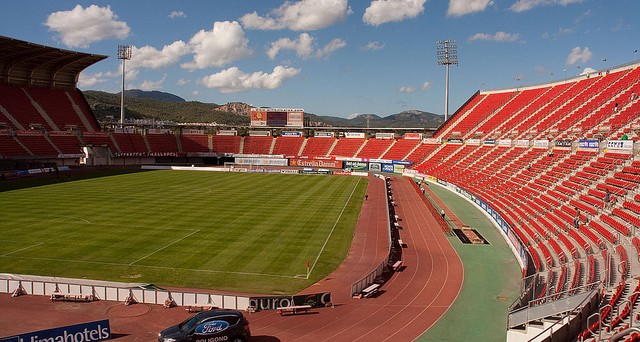
I have to confess, I am not a fan of Real Mallorca’s Iberostar Estadio. It’s nothing personal against the club. No, it’s the design, or more specifically the athletics track. The Iberostar, or to use its non-corporate name, Son Moix, is the club’s third stadium, all of which have been situated within a kilometre of each other to the north of Palma town centre.
The first enclosure was the Campo de Bons Aires, which was tucked behind the Hermitage of the Little Sisters of the Poor and close to the city’s hippodrome on the Calle General Riera. It opened on 25 March 1916 when a strong FC Barcelona won by five goals to nil. By the mid-1940’s, Mallorca had secured a regular place in La Segunda, and plans were made to move west 200 metres to the other side of La Riera.
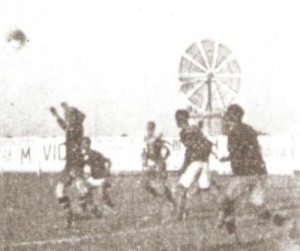 The final match at Campo de Bon Aires saw a battle against relegation with fellow islanders CD Constancia, which Mallorca won 2-0 guaranteeing their safety and second division football at their new Camp d’Es Forti.
The final match at Campo de Bon Aires saw a battle against relegation with fellow islanders CD Constancia, which Mallorca won 2-0 guaranteeing their safety and second division football at their new Camp d’Es Forti.
The new ground was designed by Carlos Garau and had an initial capacity of 15,000 spread fairly evenly across four open terraces. It was officially opened on the 23 September 1945 for the league match with Xerez CD, which Mallorca ran out 3-0 winners. In 1959, the Camp d’Es Forti was renamed Camp Lluis Sitjar in honour of the club president who oversaw the stadium’s development. Under the guidance of Argentinian coach Juan Carlo Lorenzo, Mallorca won back to back promotions and debuted in La Primera for the 1960-61 season.
Promotion saw the further development of the stadium, with an anfiteatro or upper tier added to the west side. With other extensions to the end terraces, Camp Lluis Sitjar’s capacity rose to 31,000, making it the largest stadium on the island of Mallorca. The stadium remained relatively unchanged until 1997, when it had to comply with FIFA’s all-seater stadia ruling. This drastically cut the capacity to 19,000, thus sealing the stadiums fate.
That 98-99 season also saw the end of first team football at the Estadi Lluis Sitjar. Crumbling and cramped, that 98-99 season showed what an intimidating arena the stadium was, as Mallorca lost just two of the 26 official matches played at the Lluis Sitjar that season. The final first team game was played on 13 June 1999, when Mallorca beat Celta Vigo 2-0, before making the short journey north west to Son Moix.
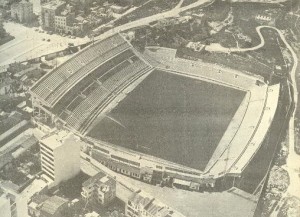 Lluis Sitjar continued to host reserve team football until 2007, before Mallorca B moved their home matches to the club’s new training complex, Son Bibiloni, a few miles north of Palma. The already dilapidated stadium fell into further disrepair with the pitch and seating areas overgrown with bushes and even feral cats living in the stands.
Lluis Sitjar continued to host reserve team football until 2007, before Mallorca B moved their home matches to the club’s new training complex, Son Bibiloni, a few miles north of Palma. The already dilapidated stadium fell into further disrepair with the pitch and seating areas overgrown with bushes and even feral cats living in the stands.
In the search for a new stadium, Mallorca found an ally in the shape of the local municipality. Palma had been awarded the 1999 Summer Universiade (or the World Student Games in old speak) and had chosen a plot of land at Can Valero, around 2 miles North West of the town centre, to build a new multi-sports stadium. As building got underway, Real Mallorca signed a 50 year lease with the municipality on 15 December 1997 that granted the club exclusive use of the stadium for all footballing activity.
The cost of the project was around 35 million euros and the head architect was soon to be club president Guillem Reynés. The stadium was inaugurated on 3 July 1999 when the Student Games were officially opened, and seven weeks later, Mallorca got its first taste of football at the stadium when Real Madrid kicked of the new season and spoiled the party with a late winner.
What of the stadium? Well, you know I going to whinge about the fact that it has an athletics track, so that aside, what about the rest? Well, it is better than some, for instance the Estadio Gran Canaria, but it frankly it doesn’t get the pulse racing. The stadium’s one redeeming feature is the beautifully curved cantilevered cover that hangs elegantly over the two tiers of the west stand.
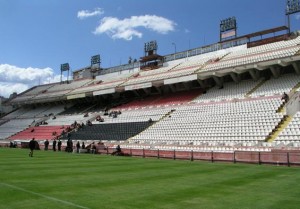 The double tier effect is repeated on the east side, whilst both ends are made up of single tiers and have all the sight disadvantages one associates with stadiums of this ilk. 23,142 bright red seats fill the stadium and whilst I shouldn’t concern myself with such trivial matters, how do they remain bright when all others of this age fade? As one would expect from a build little more than ten years old, the media have excellent facilities, as do the corporate guests. The stadium also houses a club-theme café, club shop and headquarters of Fundació Reial Mallorca, a fans forum founded in 2002.
The double tier effect is repeated on the east side, whilst both ends are made up of single tiers and have all the sight disadvantages one associates with stadiums of this ilk. 23,142 bright red seats fill the stadium and whilst I shouldn’t concern myself with such trivial matters, how do they remain bright when all others of this age fade? As one would expect from a build little more than ten years old, the media have excellent facilities, as do the corporate guests. The stadium also houses a club-theme café, club shop and headquarters of Fundació Reial Mallorca, a fans forum founded in 2002.
From the upper tier of the east and west stands, you can see the mouldering anfiteatro of the old Lluis Sitjar stadium, little more than a kilometre away. It is a potent reminder of the days when watching Mallorca was an interactive experience. Little chance of that happening at Son Moix, for with attendances averaging 13,500, any atmosphere generated quickly disappears into the Mallorcan air.
So despite a particularly fragile financial position, Mallorca is giving serious consideration to a project that would see the redevelopment of Lluis Sitjar site. The initial plans for a 40,000 covered arena at a cost of 220 million euros may have to be scaled back, but there is a determination to get back home for the club’s centenary in 2016. After all home is where the heart is, and Real Mallorca’s can be found beating within the walls of the Estadi Lluis Sitjar.
Follow @icentrocampista

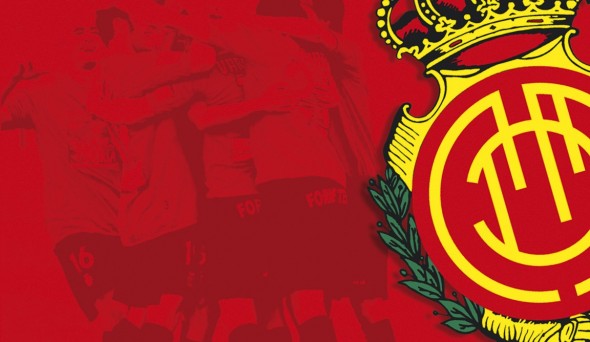

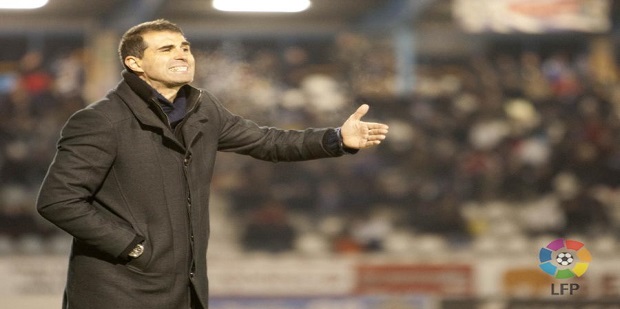
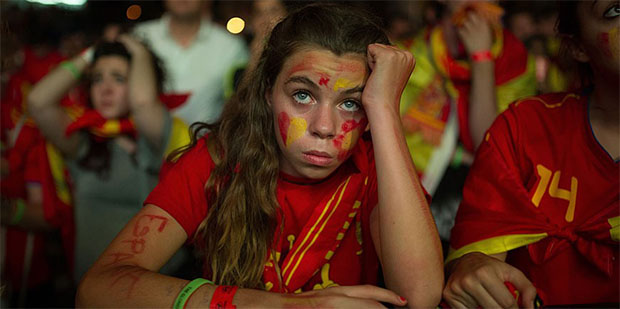


You must be logged in to post a comment Login